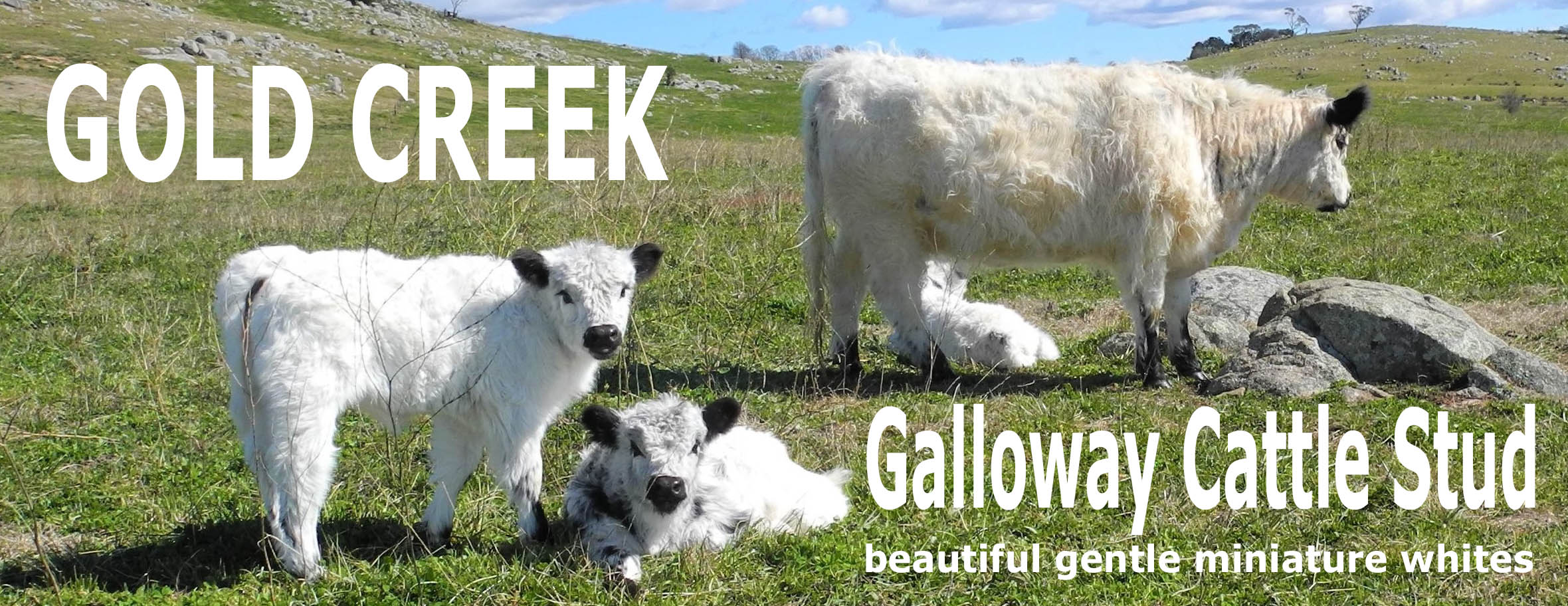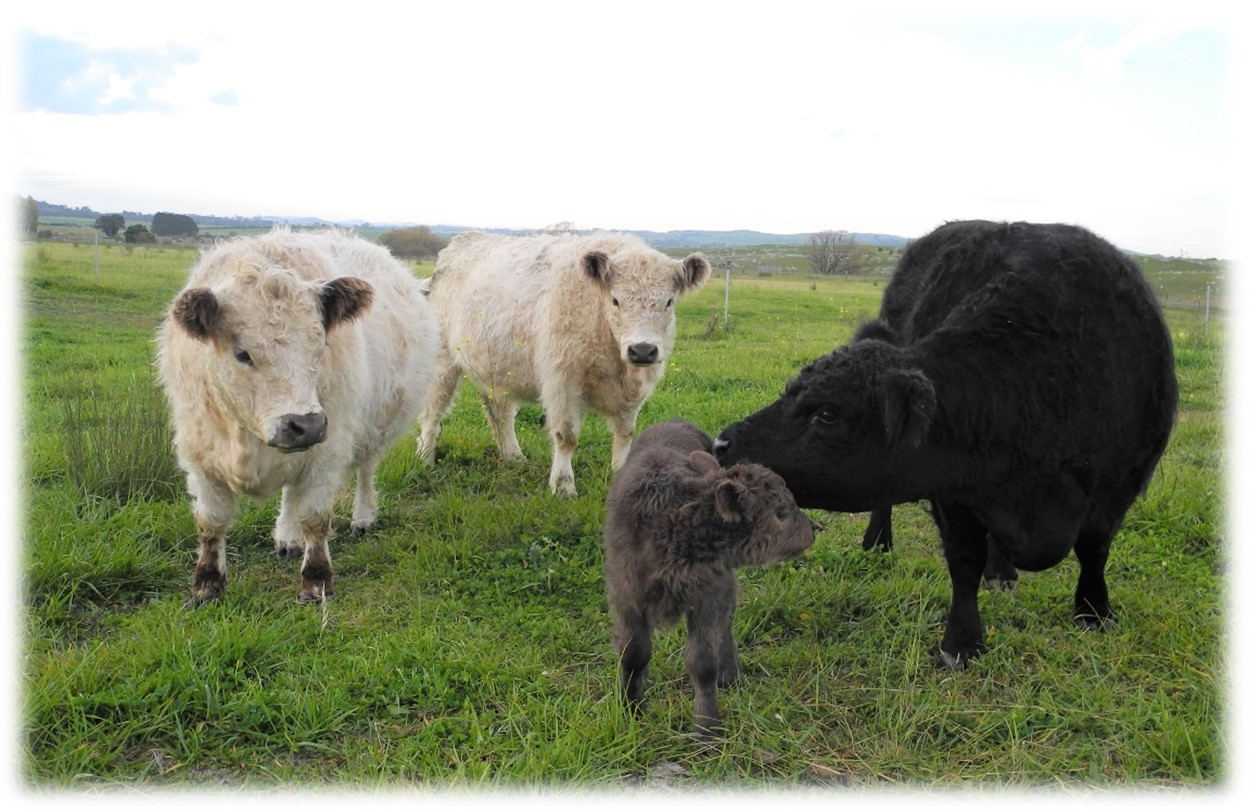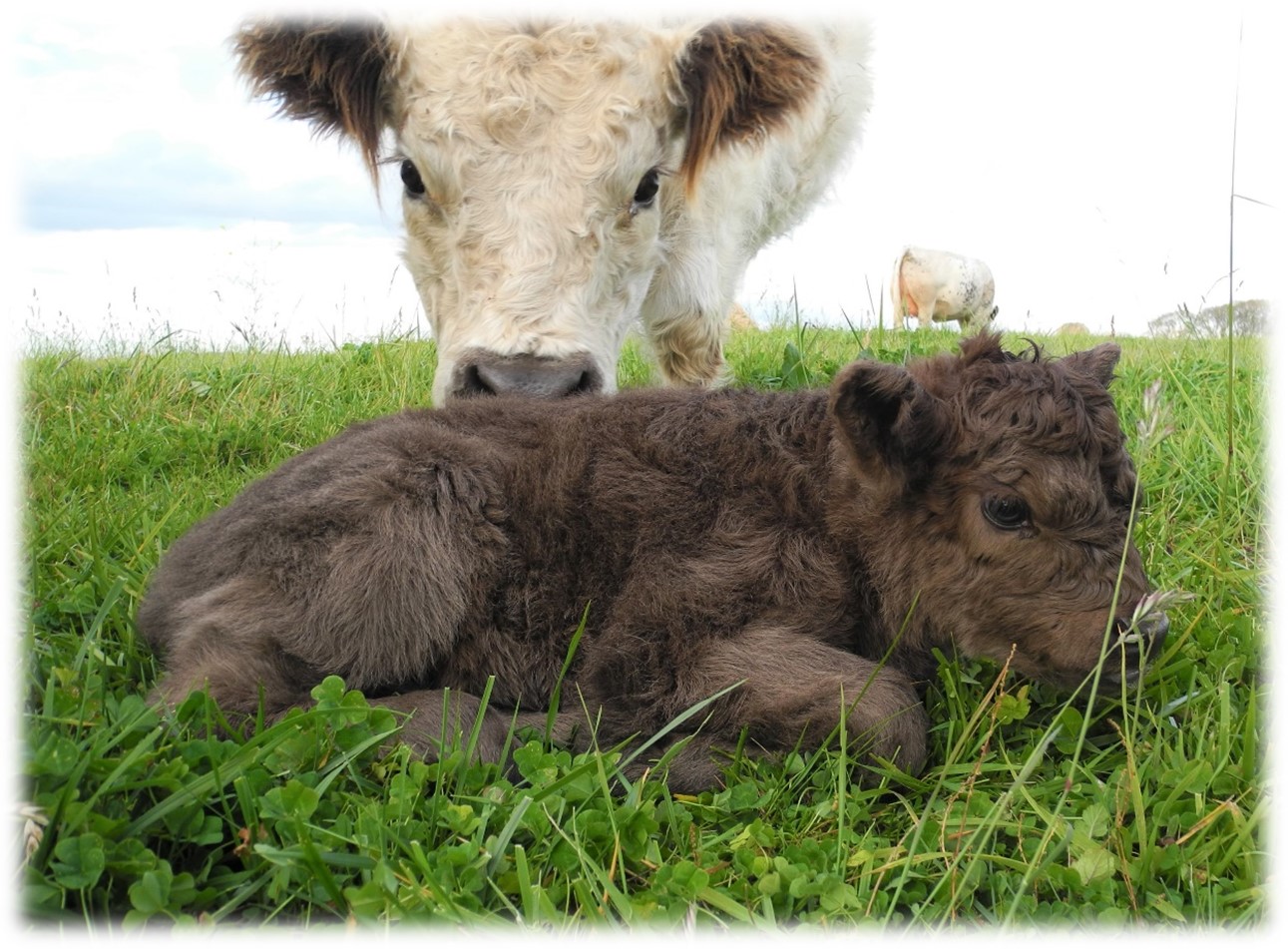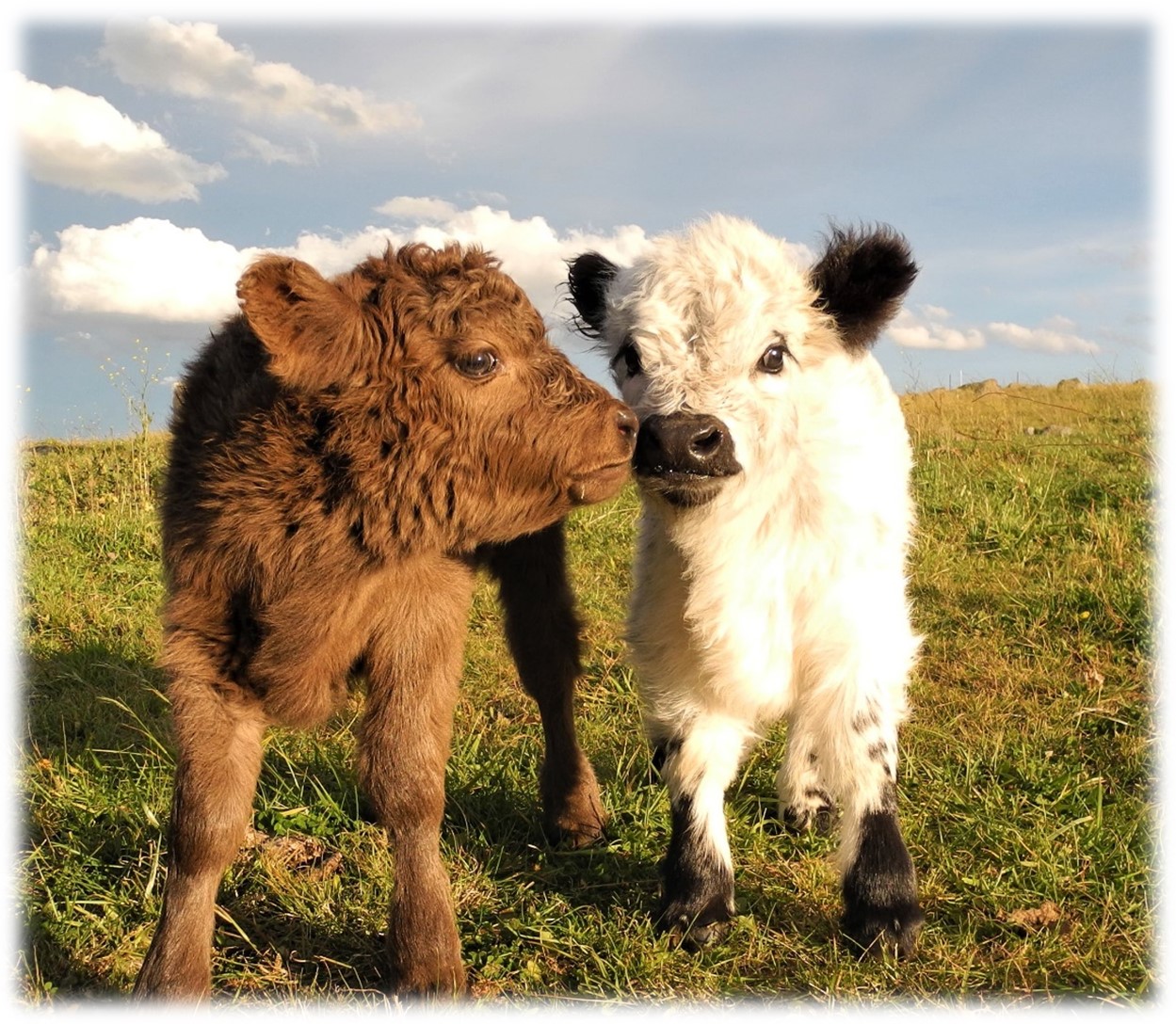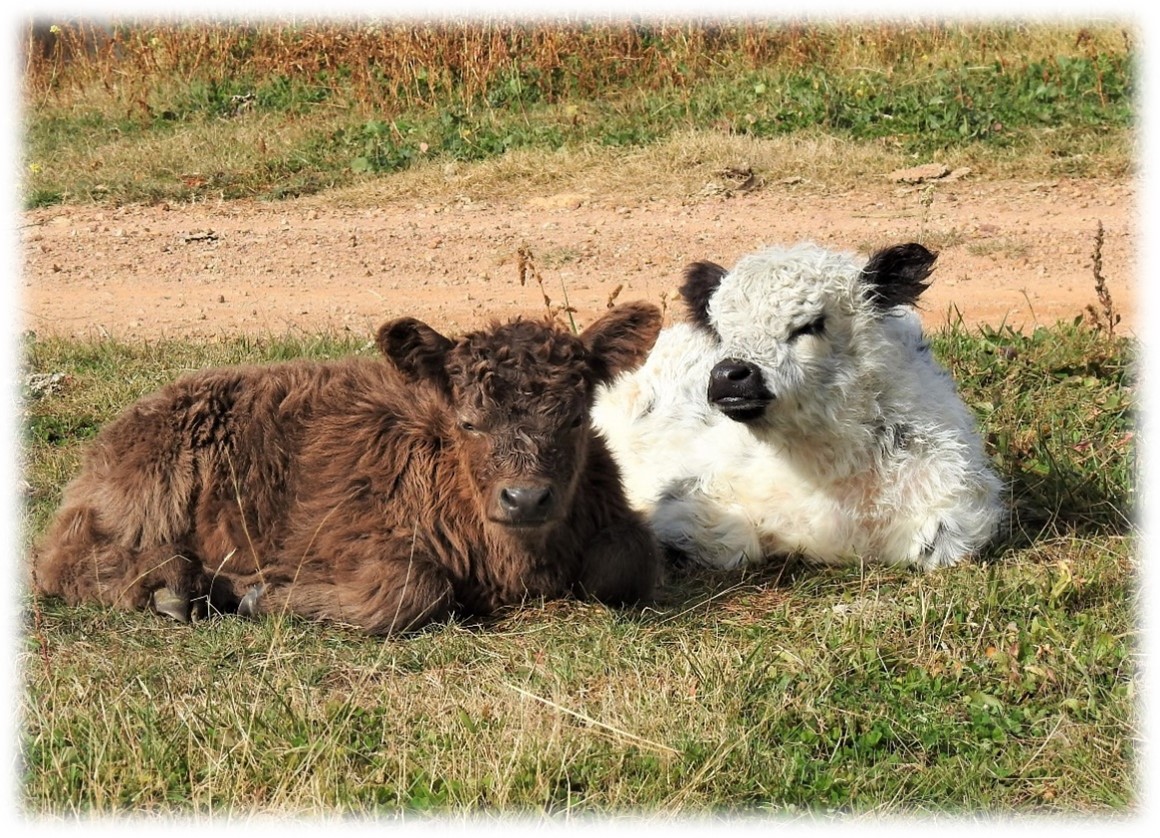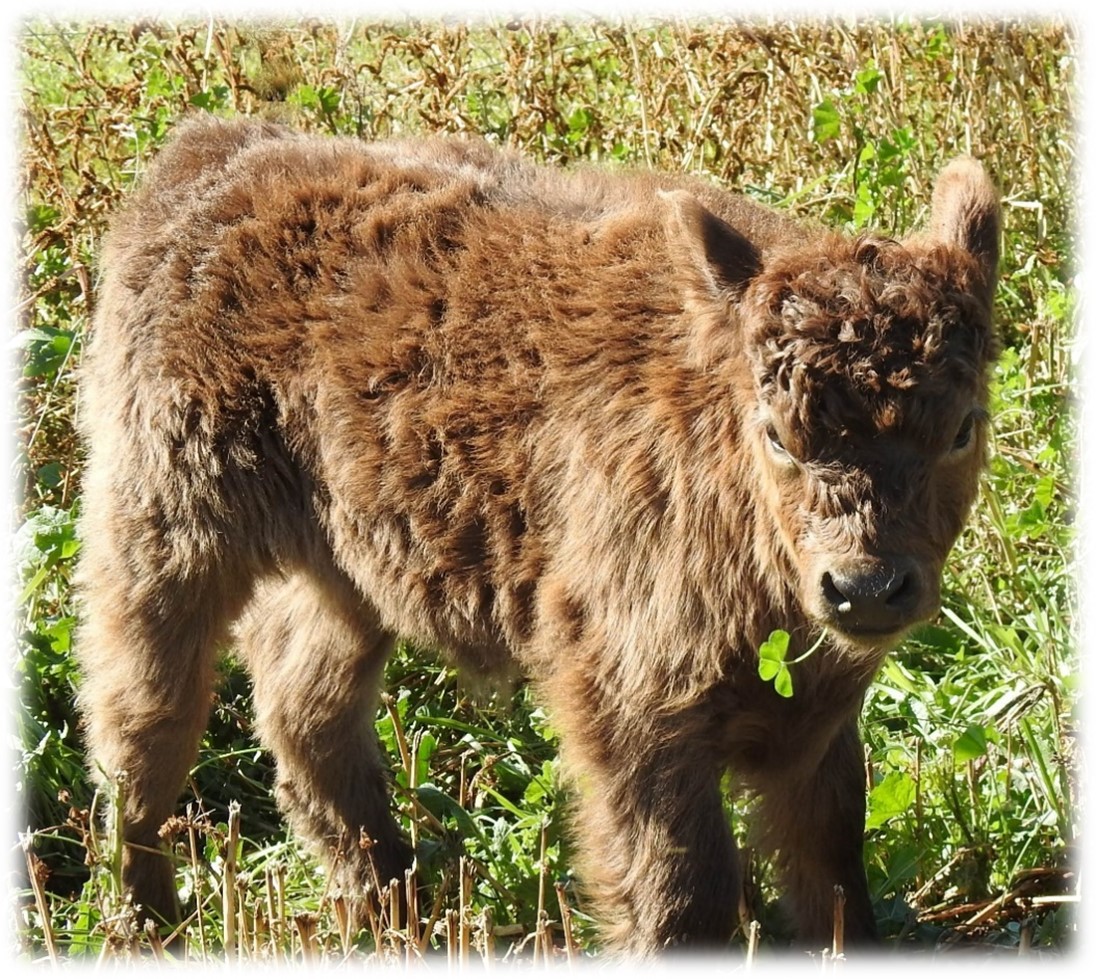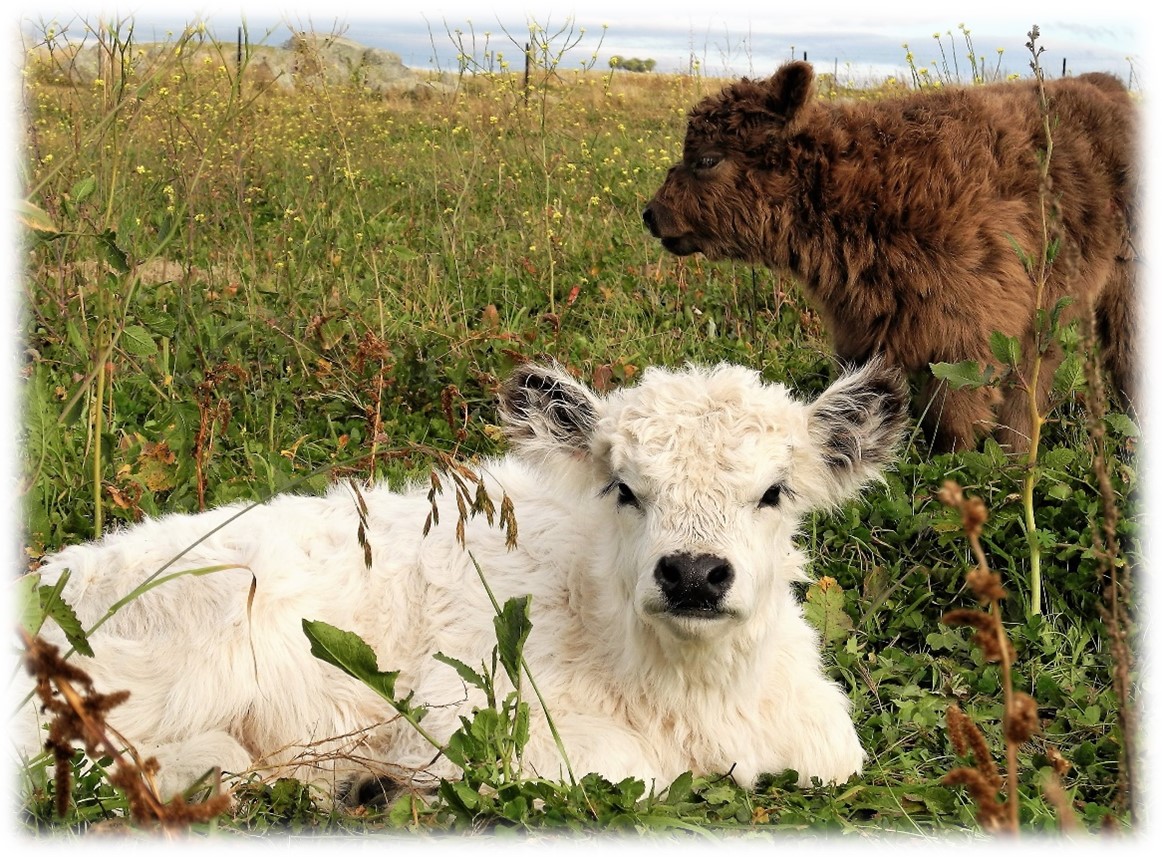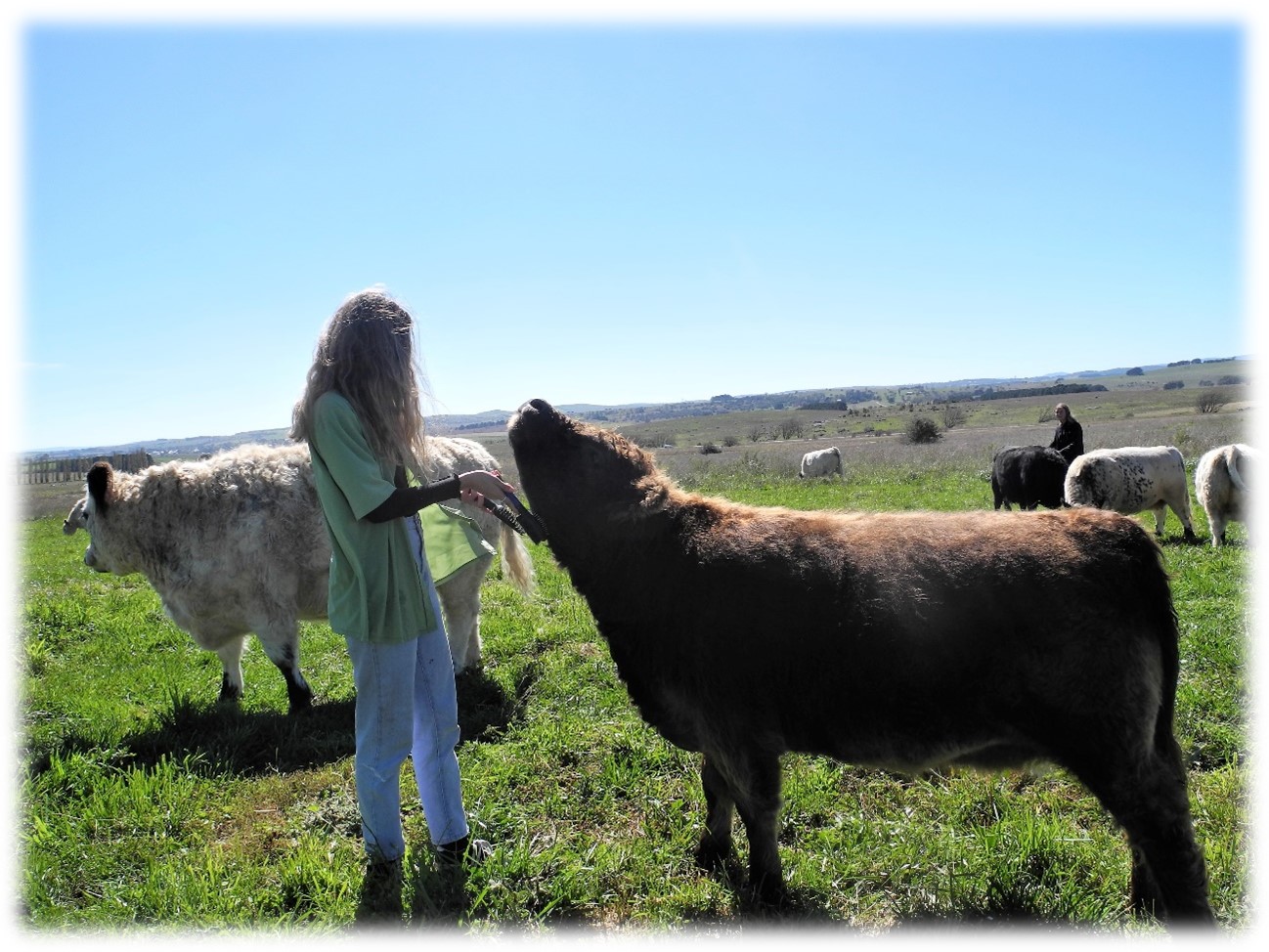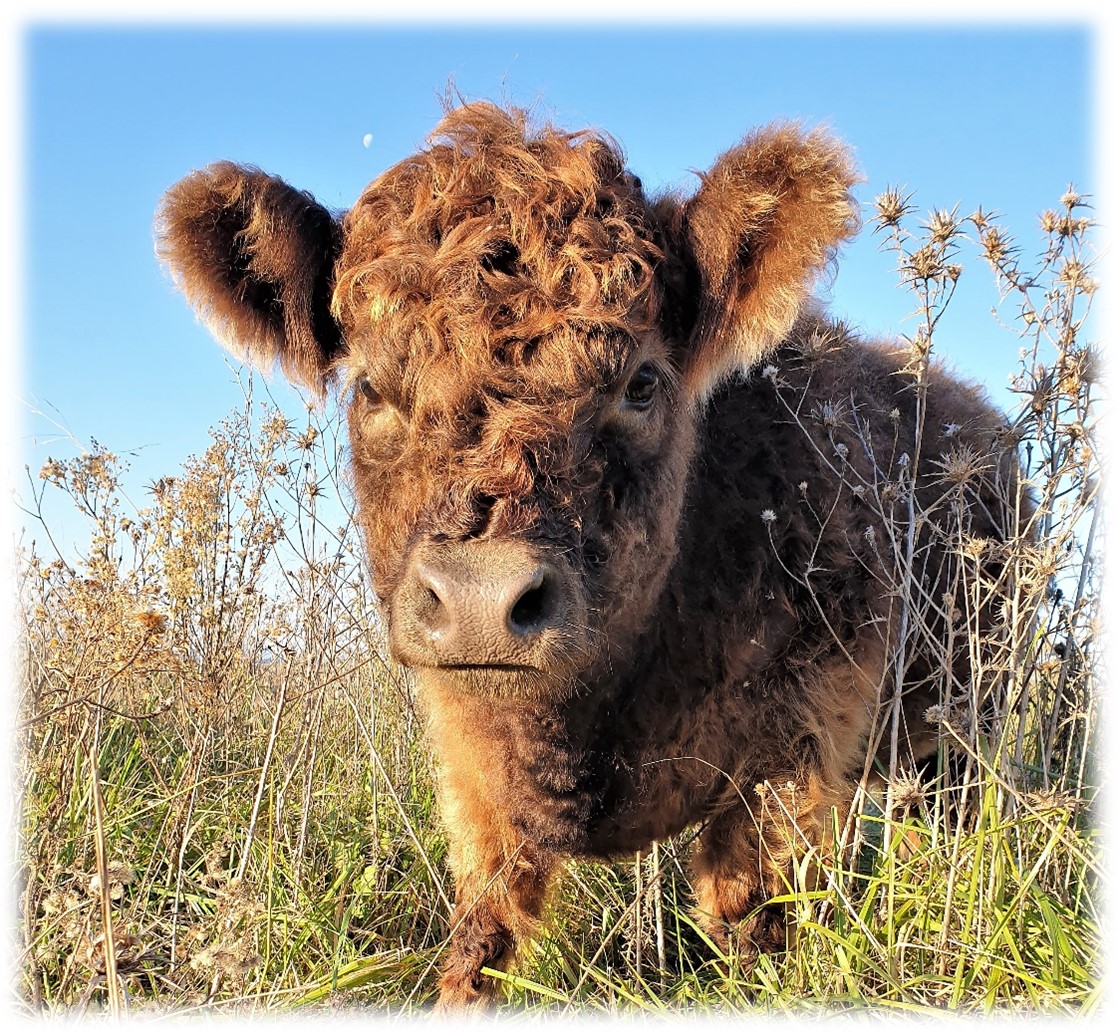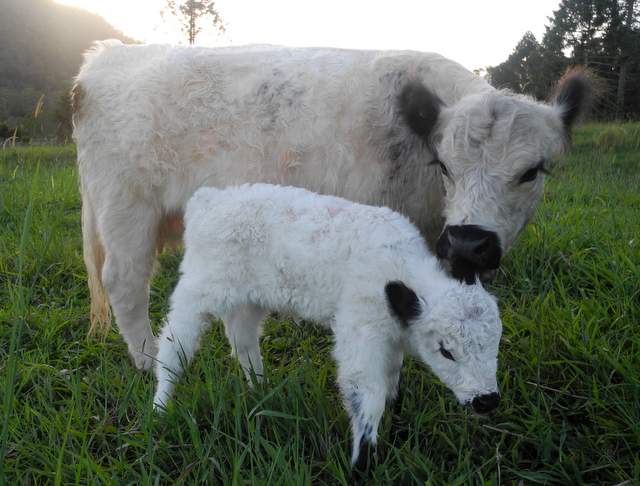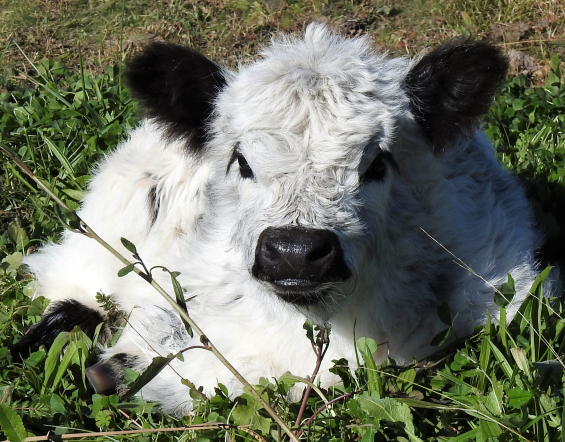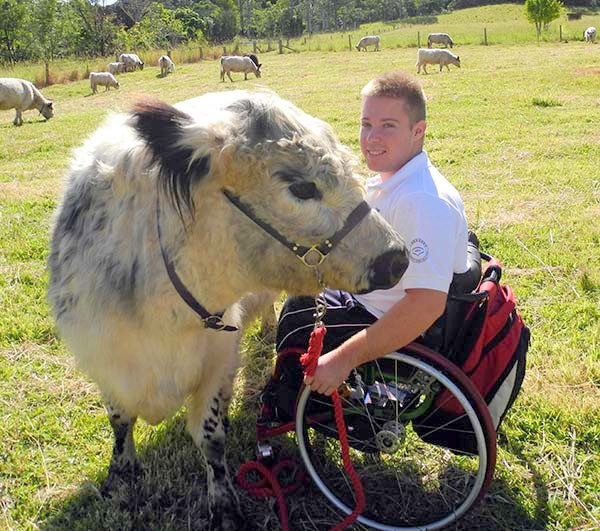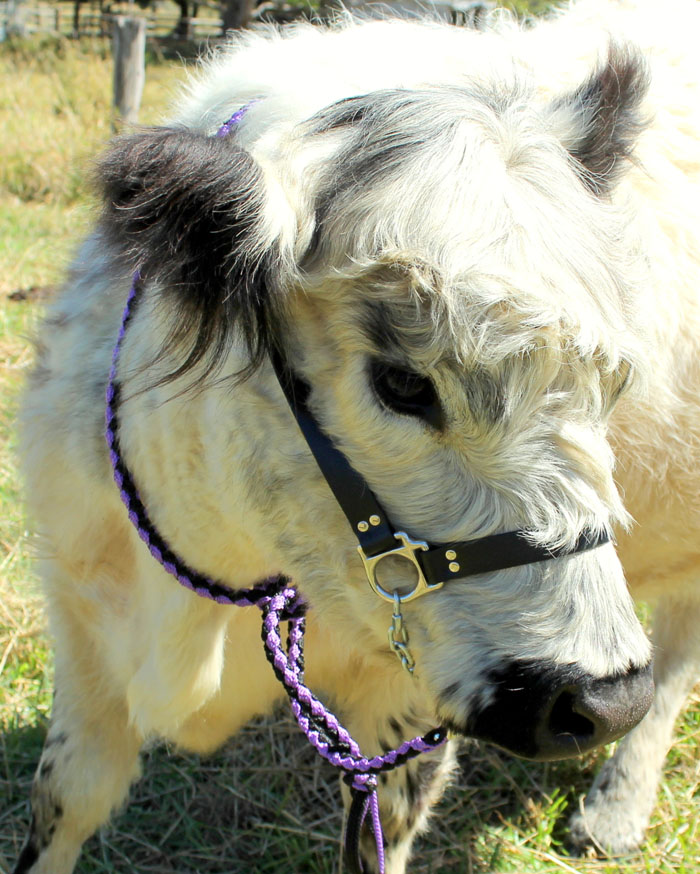When you adopt one of our cows or calves you can check in here to see all the new photos, videos and updates on your calf.
In 2024 adoptions will include an introductory letter where you will be given the log in details necessary to access this information. Adoption is sponsoring not purchasing. To find out more about our Adoption/Sponsor/Visit program click here.
Wouldn't you just love to know what this little one was up to today!?
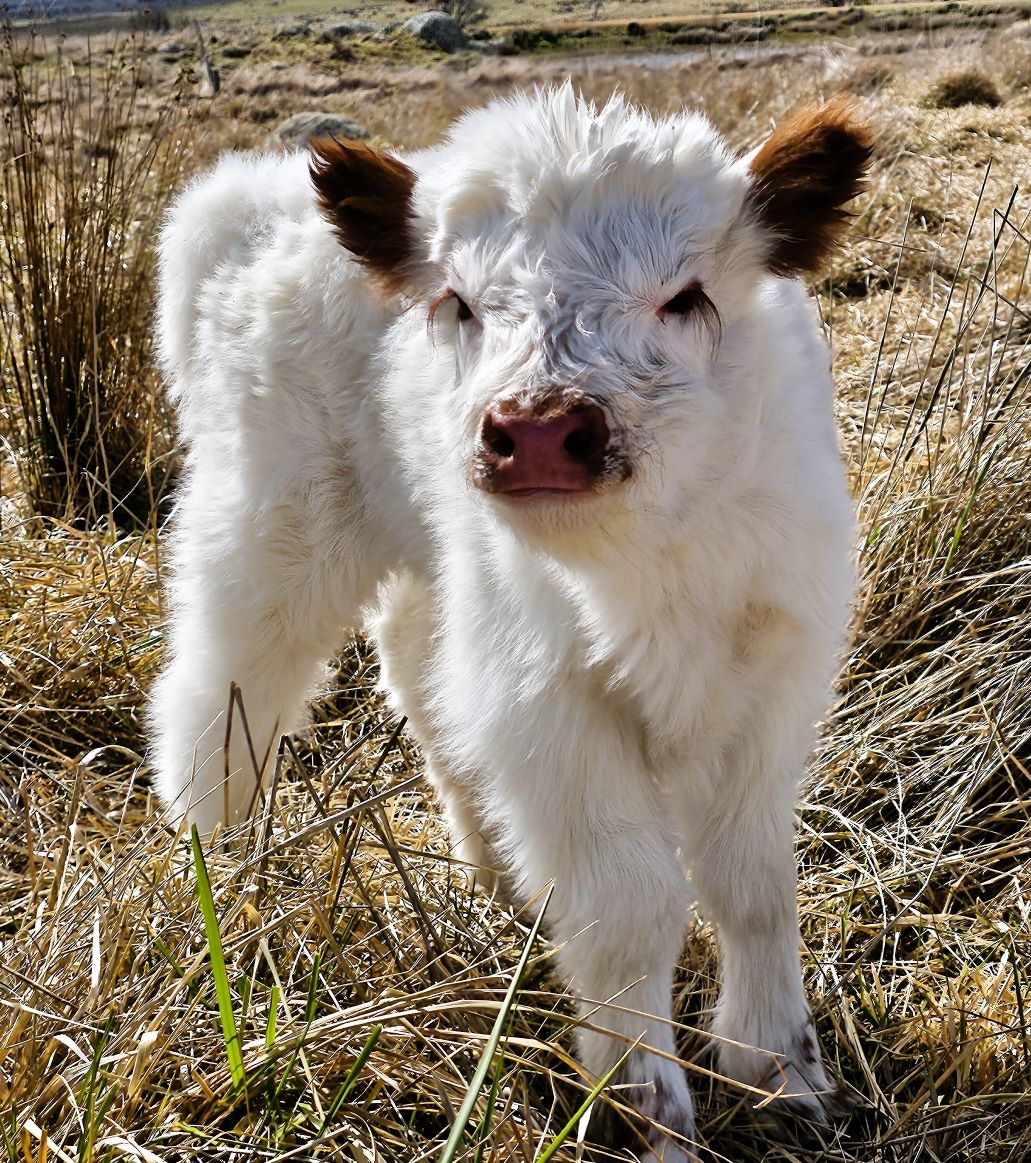
This is Lucy. She was one of the last two heifer calves born in 2023. She is so adorable she will melt the coldest of hearts.
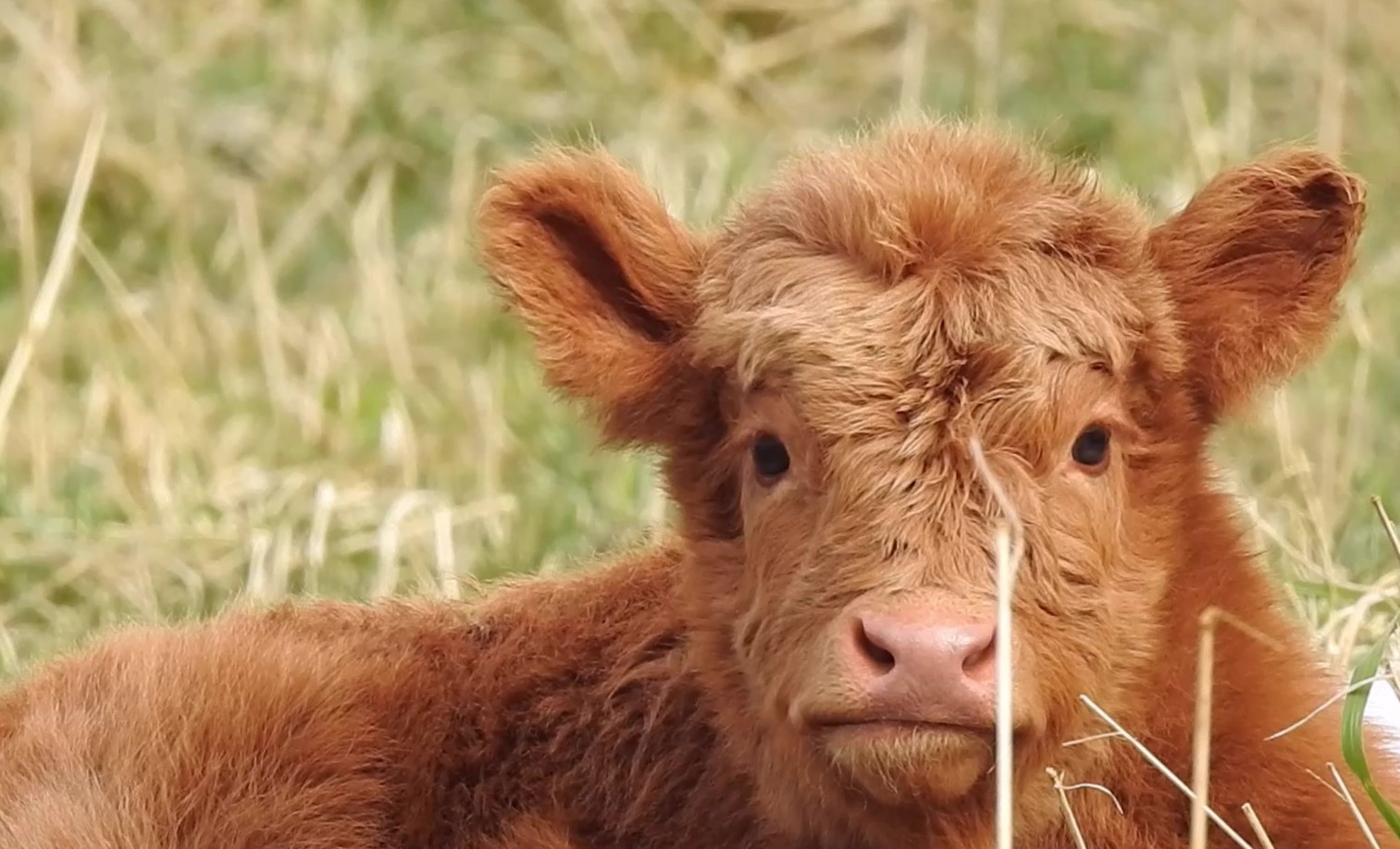
This is Roxy. She is Lucy's big sister. Roxy was born in 2022. Her cheeky adventures have kept us all entertained for a year or more now.
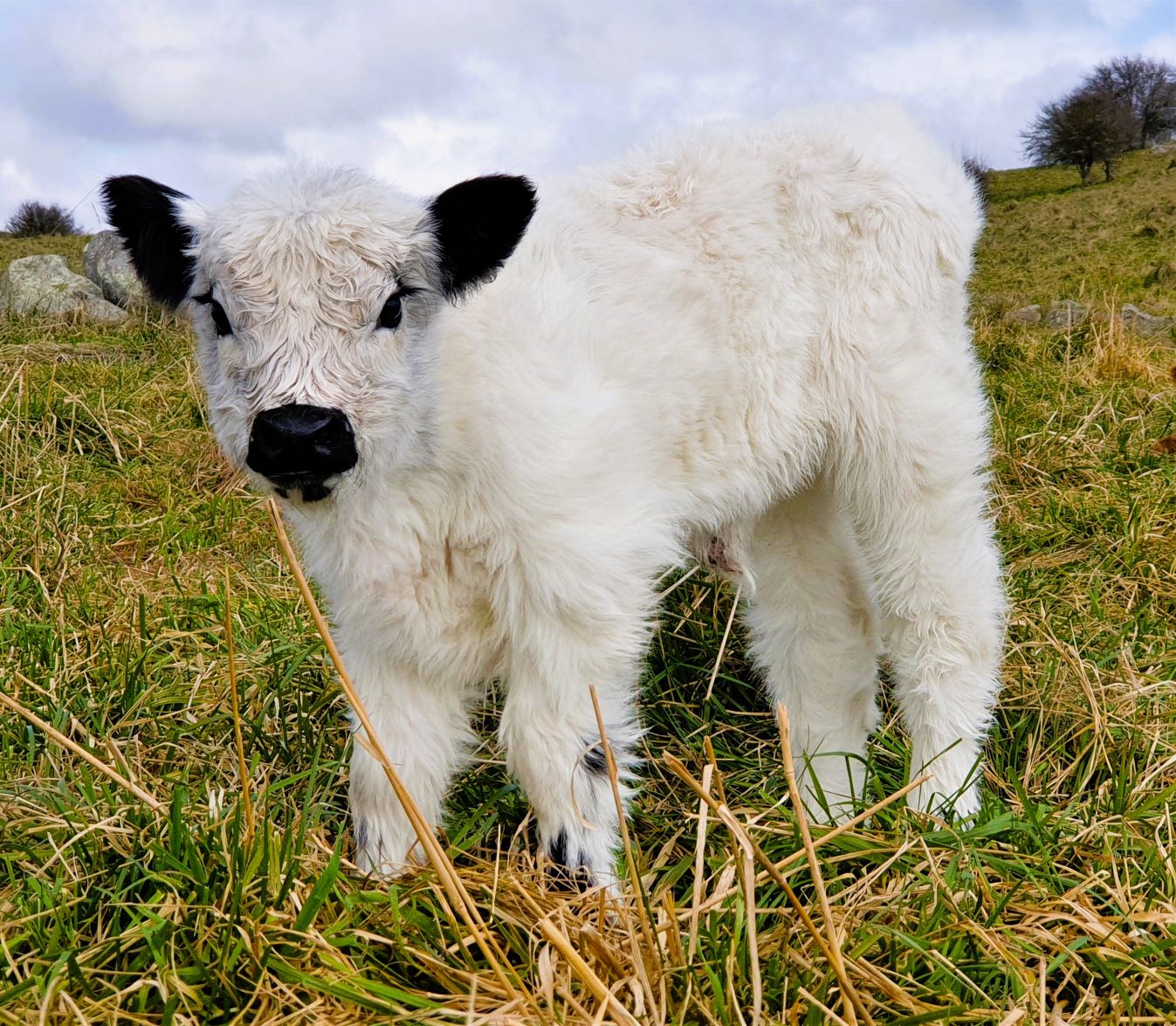
This is Bessie. She was a quiet, independent heifer calf. Bessie was often seen wandering around on her own. She is growing into a stunningly beautiful female.
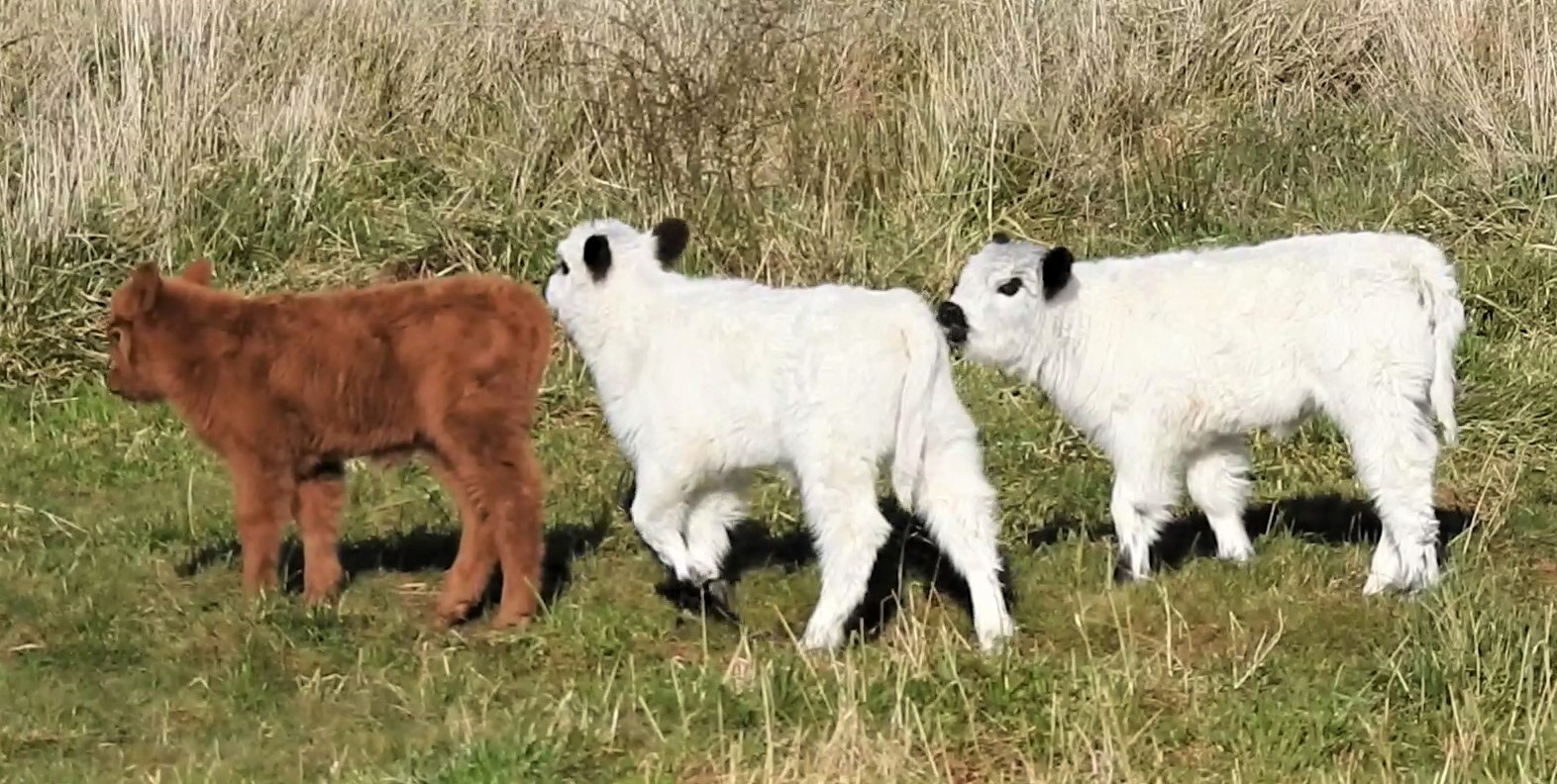
Three of the 2022 females. They spent a lot of time play fighting and getting into wombat holes.
AAT Cattle and Paddock Pets
Yes, we can teach you the most effective, low stress way to train your cattle to be as quiet and clever as our herd members. We can also show you how to work smarter, not harder, with your small cattle.
Renown as leaders in this field, we get a lot of questions. Week in week out, we get emailed requests for help and advice from people all over Australia and from overseas.
Answering these questions and attending to these requests could easily become a full-time job. Being semi-retired, we are not interested in full-time jobs. However, Suzanne will help people by providing training and education on a paid consultancy basis.
Congratulating Jaffa. The calf is days old and yet this first time mum will allow us to handle her calf.
Consultancy Fees
If you would like to benefit from our years of hard work, learned skills and experience, contact This email address is being protected from spambots. You need JavaScript enabled to view it.. Please email to discuss her availability and This email address is being protected from spambots. You need JavaScript enabled to view it.This email address is being protected from spambots. You need JavaScript enabled to view it.). Suzanne has the formal qualifications, expertise and years of experience to help you turn your Galloway herd into paddock pets and or AAT capable cattle.
Cattle being used as animal-assisted therapy (AAT) coworkers was unheard of when we started out with cattle. Back in 2005, no one had a paddock full of cows and calves that strangers could walk up to and handle in the paddock. Now, we have both AAT cattle and paddocks full of pets. It took years of patience, persistence, hard work, and more than a bit of ingenuity. Today, it doesn't feel like hard work. In fact, we do it day in day out, without even thinking about it.
There is a significant demand for these cattle as pets and as AAT workers now. There are several other breeders offering quieter cattle for sale now, too. There may even be other people starting to train them for therapy purposes now. However, demand still far outweighs supply.
Please understand that to offer proper advice and effective training, being with you and some cattle in a paddock is a must (your paddock or ours). Phone calls and emails are only useful after Suzanne has been in a paddock with you and some cattle.
Training Small Breed Cattle
![]() To be 'idiot-proof'.
To be 'idiot-proof'.
![]() To be paddock pets.
To be paddock pets.
![]() To be Animal-assisted therapy coworkers.
To be Animal-assisted therapy coworkers.
![]() To be show ring performers .
To be show ring performers .
Training cattle for AAT must include paddock time and cattle. (Either your cattle or ours).
Farm Management with Small Breed Cattle
![]() Advice on time savers, convenience strategies, and the safety tips most people never consider.
Advice on time savers, convenience strategies, and the safety tips most people never consider.
![]() Regenerative farming.
Regenerative farming.
![]() Staying environmentally friendly.
Staying environmentally friendly.
![]() Where will the wildlife fit in with your cattle?
Where will the wildlife fit in with your cattle?
How and Why to Run a Successful Adoption Program
![]() What is involved, the benefits and the pitfalls you need to know about.
What is involved, the benefits and the pitfalls you need to know about.
![]() Adoption certificates. What to include and the different ways of publishing them.
Adoption certificates. What to include and the different ways of publishing them.
![]() Mascots (or other merchandise).
Mascots (or other merchandise).
![]() How to timetable paddock visits with people.
How to timetable paddock visits with people.
![]() How to manage visitors once they are in your paddock.
How to manage visitors once they are in your paddock.
Registered Purebred White Galloway Cattle
Like the full blood cattle, the number of purebred White Galloway cattle in Australia is also small. There is, in fact, an even smaller number of purebred White Galloways registered as 'Active' in Australia. We aim to significantly improve on that number too. Purebred Galloway cattle can be registered and shown on equal footing with full blood Galloways.
Top Quality Purebred Cattle
We have a small number of purebred cows. To increase the numbers of purebred cattle in Australia, we have embarked on a very ambitious purebred Miniature White Galloway breeding programme. It is our aim to breed as many gorgeous purebred White Galloways as we possibly can.
We had our first GOLD CREEK purebred calf, born and bred on the property in 2014 (GOLD CREEK Kismet).
Our aim with this breeding programme is to have small, good quality, White Galloway cattle. Miniature Galloways that, through our meticulous purebred breeding programme, can eventually lead to progeny that can be registered as purebred White Galloways. These will be purebred White Galloway cattle that can claim top quality genetics.
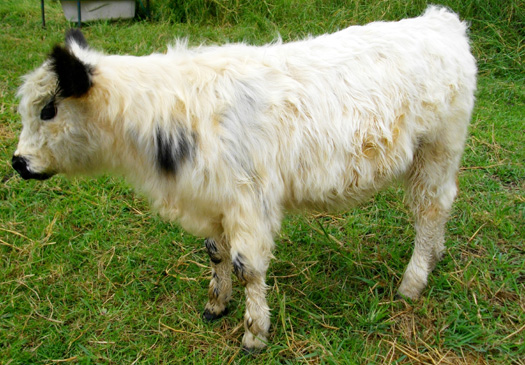
Carefree Purebred heifer Gold Creek Echuca at twelve months old in 2010.
Every year the progeny of each generation is listed and their details are recorded. The progeny can only be registered as purebred when they reach the purebred standards.

'Babysitting' duty. Echuca's sister is the small black-eared fluff ball in the grass. 2011
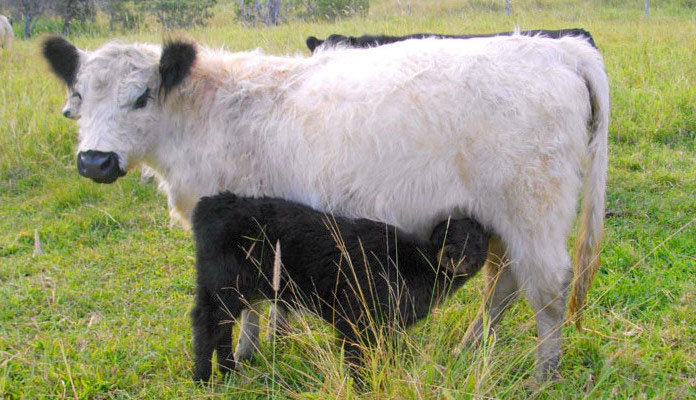
Pure Bred cow Gold Creek Echuca with her very own black heifer calf. 2012
The Technical Details
Technically speaking, until the cattle in our breeding programme reach purebred status, they are referred to as White Galloway listed 'grades'. The be clear, the details of graded cattle are 'listed' or 'recorded' with a Galloway association or society, as opposed to being registered (as is the case of full blood and purebred cattle). Even Miniature Galloway cattle registered as 'purebred' (93%+) continue to have the letters GRD (grade) recorded as part of their ancestral code. This is because a purebred Galloway can never reach 100% no matter how many generations pass.
All bulls used in any Galloway purebred breeding programme, including ours, have to be DNA tested. Their DNA profile and their breeding details must be recorded in a Galloway association or society herd book and bulls must test free of certain diseases. The breeding details of all females also have to be recorded and cows must test free of certain diseases for the breeding programme to be legitimate. All cattle registered or recorded with an Australian Galloway Association or Society, are on a public record. These records can be viewed online or verified by simply contacting either group. For more detailed information on the grading up process go to Purebred Grading Up Program.
When We Were Starting Out
White Galloways are, in our opinion, the best breed of miniature cattle in Australia. However, they were not the smallest or the most readily available of the miniature cattle breeds when we started out. The size issue has changed in recent years with established breeders in both Queensland and New South Wales having recently bred much smaller full blood and purebred White Galloways. It is still difficult to purchase purebred, Miniature White Galloways - especially females.
When we started out full blood females of any size were difficult to come by and we wanted to build up our herd numbers. We also wanted to bring down the size of the individual herd members, while still retaining all the good qualities of the Miniature White Galloway. First and foremost we wanted the smaller White Galloway cattle in the purebred breeding programme to be a stand-alone animal of high-value right from the very start.
The calves in our purebred breeding programme are small, white and have black points - ears, eyes, nose, and hooves. To date, they all have beautiful white, full or medium-length coats. From the outset, they were smaller than our full blood cattle and just as docile and friendly. The 2011 heifer calves seemed impossibly small at birth, but they have all grown up strong and lively.
These three little heifers were very popular with visitors throughout 2012 and 2013. In fact, as 2013 rolled along, it was proving difficult to keep them here because everyone wanted to take one home with them! After waiting so long for them, we are very reluctant to part with any of our little 'girls'.
In January 2014 GOLD CREEK Huggie (an 87.5% grade) had her first calf - a heifer. GOLD CREEK Kismet is our first GOLD CREEK purebred calf from this breeding programme. Huggie calved early one morning, totally unassisted and was busily cleaning her beautiful little heifer before we were out of bed.
The Future
As our breeding programme progresses, we become more and more impressed with the progeny of these smaller White Galloway graded cattle. There was great excitement when we were able to register our very own GOLD CREEK Purebred White Galloway from this programme. This process takes quite some time - a minimum of five generations using a full blood Miniature White Galloway with every generation.
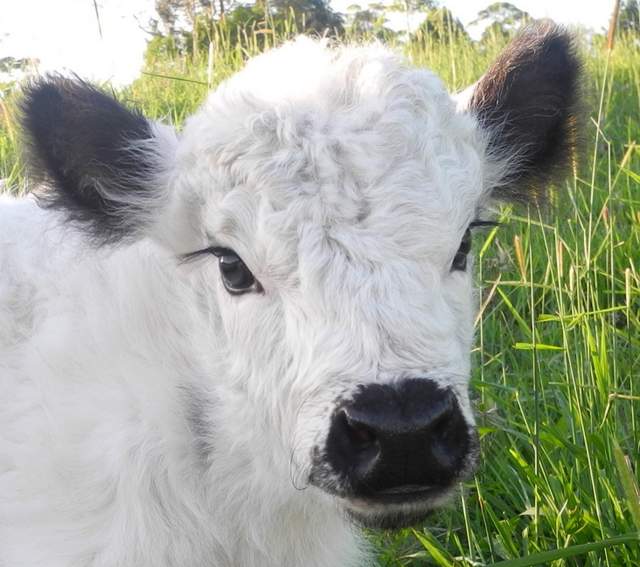
We waited so long to see this little face - well worth the wait. GOLD CREEK Kismet purebred.
We look forward to seeing the progeny of each generation as the little heifers come of age. As time moves on, we are always on the lookout for very small full blood Miniature White Galloway bulls to join with these heifers.
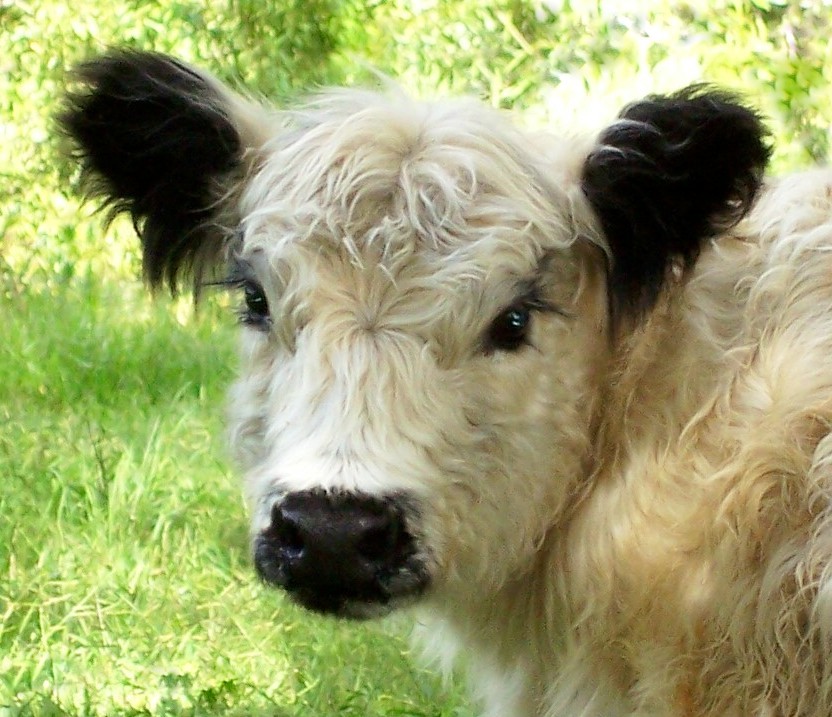
Purebred heifer from full blood cow and the purebred bull Glenyr Cannon Boy.
This email address is being protected from spambots. You need JavaScript enabled to view it.This email address is being protected from spambots. You need JavaScript enabled to view it.
Galloway cattle are a heritage livestock breed. An ancient Scottish breed they are the oldest of all British breeds. The number of registered full blood White Galloway cattle worldwide is small. We breed full blood Galloways for the pure joy of it, to increase the number of full blood Galloway cattle in Australia and to introduce this incredible breed to as many people as we can. We are very proud of our gorgeous cattle. We have chosen not to take our full blood cattle into the show ring - but you most certainly can.
GOLD CREEK FULL BLOOD - TO WIN HEARTS AND BUILD NUMBERS
In the past, we purchased many show-winning, stud breeding cattle from interstate. From that starting point, we are now breeding our GOLD CREEK stud cattle with sought after bloodlines and show ring potential. These cattle are so placid that just about anyone could show them if they felt so inclined. To date, we have chosen not to enter the show ring ourselves, but we now have other more experienced breeders taking our cattle into the show ring, and the results have been very pleasing.
We are simply content to enjoy our cattle here on the property, share them with you online and add their calves to the herd book. There is only a very limited number of full blood Miniature White Galloways registered as 'Active' in Australia - we aim to improve significantly on that number.
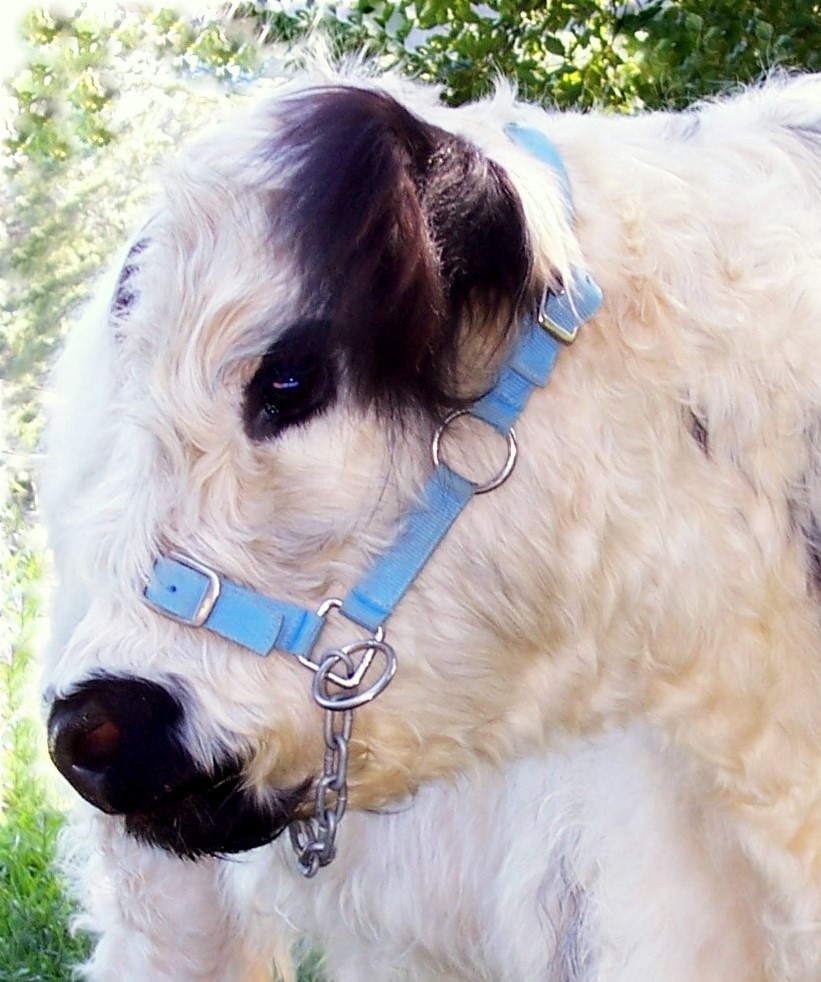
GALLOWAY ORIGIN AND HISTORY
The Galloway is a very old Scottish breed. It is the oldest known British breed on record and the oldest known polled beef breed in the world. The numbers of White Galloway were so low that they were listed as a rare breed in both Australia and New Zealand at one time.
BREED CHARACTERISTICS
Galloways, not being as tall as European breeds were once referred to as 'large cattle on short legs'. Miniature Galloways have the same breed characteristics as standard or traditional Galloways but must comply with strict height requirements. 'Miniature' Galloways are just the shorter cattle of this compact breed. There is no actual miniature gene involved in producing Miniature Galloway cattle. Their shorter height measurements have been achieved by selective breeding (or breeding down as it is also called).
Galloways are naturally polled. They are long-living, very resistant to disease, and easy to manage. They create strong hybrid vigour due to the purity of the breed.
The unique double coat of hair makes the Galloway an extremely versatile breed, able to withstand extremes of temperature and climate. Galloways, because of their extra hair, can actually gain weight when on the same ration as other cattle which are losing weight.
Galloways have an amazing ability to forage on sparse hill conditions, yet also perform outstandingly on high-grade pasture. Galloways are being sought after to improve marginal lands, as they graze non-selectively. Non-selective grazing encourages better quality grasses while at the same time does not allow the poorer quality species to take over.
One of the most notable characteristics of the Galloway female is her ability to rear calves naturally under all conditions. In Australia, the Galloway has proven itself not only in cold climates but also in the hot inland, where Galloway cross cows have survived severe droughts while rearing a healthy calf.
Galloways are an extremely fertile breed, regularly producing vigorous live calves. The cow is noted for ease of calving, being a protective mother and having an abundant supply of milk. A sustained lactation period ensures a strong, well-nourished calf at weaning. The maternal attributes of the Galloway cow came out tops in a study at the famous Clay Animal Research Center, Nebraska, USA. Eleven breed groups were tested for their ability to give birth and rear their calves. Of the 11 breed groups included in the study, the Galloways recorded the highest weaning percentage (95.5%), the highest calf survival percentage (95.2%), and an outstandingly low incidence of calving difficulty (0.8%).
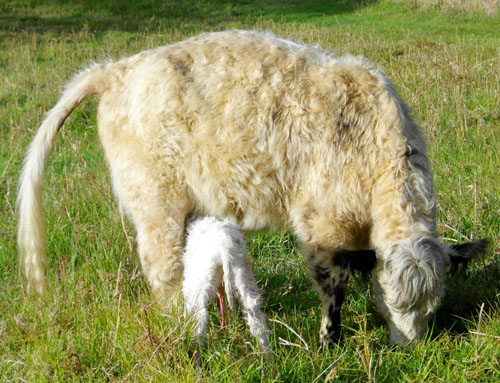
* In 2009 Cuddles calves and hardly blinks an eye. Her perfect little heifer calf was up and suckling in minutes and Cuddles was back to eating grass!
Yes, that is the red, wet umbilical cord you can see. So yes it would seem that it is true what they say about Galloway cows and ease of calving.
It is also true what they say about Galloway cows and calf survival to weaning - if a Galloway cow loses a calf you can be pretty sure it was for reasons beyond her control (paralysis tick, snake bite...) Galloway cows 'give their all' to their calves.
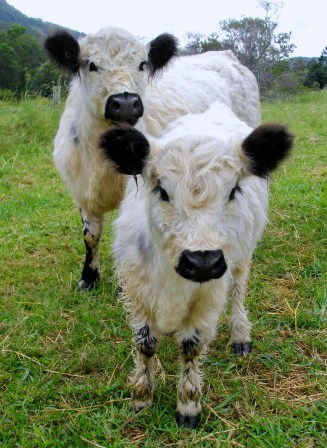
With the Galloway's non-selective grazing habits, Galloway beef can be raised under extensive conditions. Research carried out shows that beef which is extensively produced can be of great benefit in a healthy diet. Galloway beef is rich in linoleic acid, which reduces the dangerous type of cholesterol (LDL), prevents thrombosis and, therefore, protects coronary vessels.
The carcass of the Galloway is of excellent quality, with high yields. By using Galloways and their crosses it is easy to obtain fat cover and heavy muscling to suit most trade requirements and new marketing techniques. Galloway steers have gained much success in both carcass competitions and grazing trials. The high yield of Galloway and Galloway cross steers makes them a very attractive item for the feedlots, as the higher the yield, the higher the profit per animal.
NB: This information is based on the NSW Dept of Primary Industries: Agriculture Agfact A2.3.36
OUR ORIGINAL HERD
Our original full blood females were predominantly from the very successful, well known Castle Douglas bloodline.
Wanting to inject some new blood into our herd we searched Australia high and low for full blood bulls from a different bloodline to purchase. We did not have any success, so our search eventually led us to complete an Artificial Insemination course in 2008 and to then source high-quality straws from overseas.
Courtesy of another Galloway breeder, we started using straws from a magnificent, full blood, Miniature White Galloway bull from overseas. The calves from this breeding line are helping us to avoid the ongoing problem of bloodlines becoming too close in the Miniature White Galloway cattle in Australia.
BUILDING OUR HERD
Early in 2010 we were able to purchase eight more beautiful Castle Douglas full blood Miniature White Galloway females and two bull calves directly from the Castle Douglas Stud. Again, many of these cattle came to us having won ribbons at shows in the southern states, prior to our purchase. The Castle Douglas Stud, in Braidwood NSW, was the original home of the Miniature Whites. After decades of success, stud owners Roger and Fran Rankin were wanting to retire from breeding and showing their prize-winning Galloways. We were very fortunate to be able to procure these incredible females from the Rankins. It gave us access to the many, many years of experience that went into breeding these magnificent females and an open line of communication to the wisdom of the two people responsible for putting it all in place. It doesn't get much better than that.
Six of these Castle Douglas stud females calved mid-2010, producing two more beautiful little heifers to add to our stud breeding 'team'.
By mid-2011 we were able to put our first full blood Miniature White Galloway bull to work. Castle Douglas Nemo is a docile, well-formed, rather small bull. His progeny in 2012 were absolutely gorgeous and nearly all heifers - we were rapted.
We were really looking forward to seeing Nemo's calves on the ground throughout 2013 - especially those from the cows that already carry the bloodline from overseas. Two beautiful heifers, GOLD CREEK Snuggle and GOLD CREEK Jelly Bean did not disappoint us.
Six calves were registered in 2014, half of them full blood.
In anticipation of moving our herd south, we did not put all of our cows into calf during 2015 - 2016 so births and registrations were very low.
Now that the herd is grazing safely in Braidwood NSW the calves throughout 2017 and 2018 have been everything we have hoped for and more. All the little steers sold well as pets. The six new purebred and full blood small heifers are a delight. We will monitor their breeding progress with great interest.
Due to drought conditions, we didn't have any calves in 2019, we registered one in 2020 and none in 2021. After constant rain and leasing a small red bull in late 2021 we can say that 2022 is looking promising.

Castle Douglas Nemo in 2010 (with his pal Old Spice on his left). Our very beautiful boys.
Artificial Insemination Procedure
In the hope of finding a better way of delivering the semen with our small miniature cattle we further investigated the actual Artificial Insemination procedure. We were successful and are now implementing a procedure that is specifically designed to be less stressful for the cows and far more 'user-friendly' for our little heifers.
THE FUTURE
Building our herd of full blood Miniature White Galloways, and introducing this docile breed to others, has been a very satisfying experience. We are very proud of what we have achieved to date and we are really looking forward to what the future may bring.
We now have one of the most beautiful herds of full blood Miniature White Galloway cattle in Australia. This is only our totally biased opinion and still a small herd, given the limited number in Australia. But, it gives us a sense of pride in our achievements nonetheless.
Given a choice, we would choose Miniature White Galloways time and time again. It has been our experience, that the Miniature Galloway is the most docile and affectionate in nature of all the different breeds of miniature cattle. They are the perfect animal for people wanting beautiful cattle to show, docile cattle as pets and great foragers for any small acreage pasture management needs.
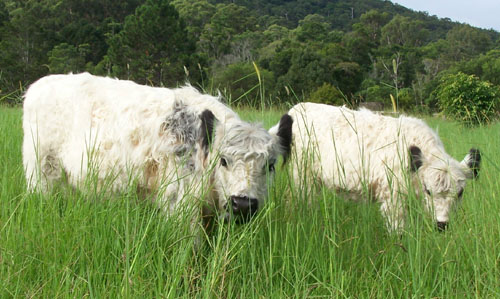
A Full Blood Miniature White Galloway heifer with black points - early 2010.
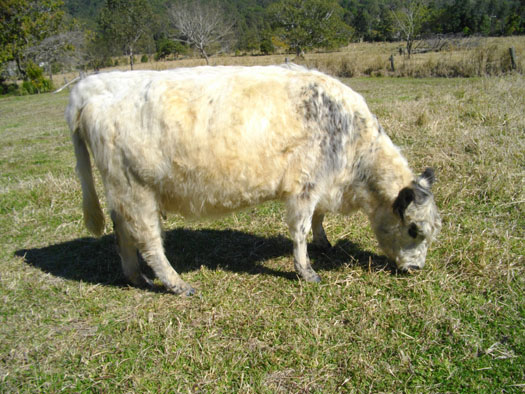
The same Full Blood Miniature White Galloway heifer just before she calved mid-2011.
![]() This email address is being protected from spambots. You need JavaScript enabled to view it.
This email address is being protected from spambots. You need JavaScript enabled to view it.
